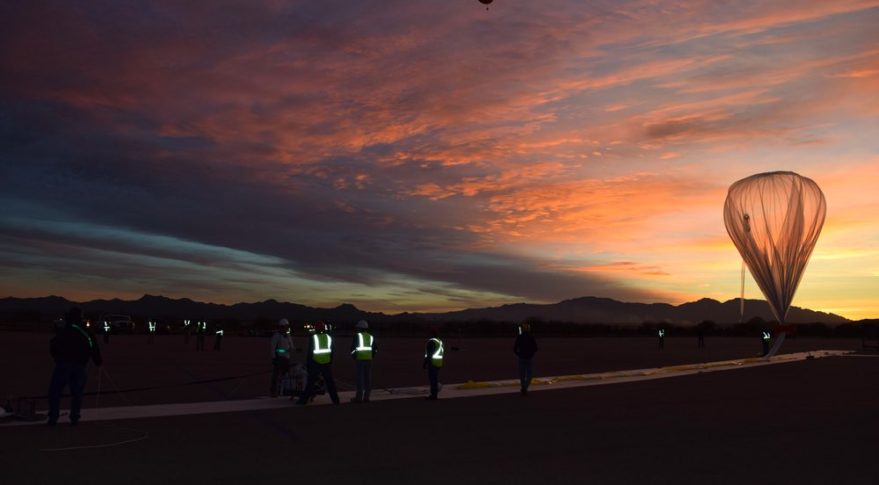
World View is developing a type of balloon it calls a “Stratollite” that can remain in the upper atmosphere for extended periods and hover over a region, providing services usually provided by orbiting spacecraft.
Credit: World View Enterprises
WASHINGTON — An Arizona company developing stratospheric balloons for tourism and research announced April 28 it has raised $15 million to develop a new type of high-altitude balloon that could serve missions usually handed by satellites.
World View Enterprises said the $15 million Series B round will go towards the development of what it calls “Stratollites,” a version of its high-altitude balloons that are able to remain aloft for extended periods of time and remain over the same area, or travel extended distance as needed to carry out their mission.
World View is already flying more conventional balloons that carry research payloads into the stratosphere for limited periods of time. “The major innovation in this product is the ability to fly for long periods of time over specific places of interest,” said Jane Poynter, chief executive of World View, in an interview.
World View is able to control its Stratollites without any propulsion system, but rather by taking advantage of divergent wind conditions at different altitudes in the stratosphere. “The beautiful thing is that the planet gives us a propulsion system, and it’s called the wind,” Poynter said.
Taber MacCallum, World View chief technology officer, said the company has already done some test flights to validate wind models to confirm that they can maneuver using the wind. “It’s a bit like sailing,” he said. More tests are planned over the next several months before beginning to fly customers towards the end of the year.
World View anticipates using Stratollites for applications like communications, remote sensing and meteorology, missions today frequently carried out by satellites. Poynter said the company has received “a lot of interest” from potential customers for those applications, although she did not disclose any specific commercial or government customers.
“No other balloon, satellite or drone has been able to successfully complete long-endurance flight over a specific area of interest and safely return to Earth,” said Deepak Kamra, general partner at Canaan Partners, a venture capital fund that led the investment round. “World View is creating a brand new ‘above-Earth’ economy that operates in an unutilized layer of space.”
World View, which raised $7 million in an earlier Series A round, said the new investment will go towards accelerating development of the Stratollite technology and beginning commercial service. Canaan and other investors, including Norwest Venture Partners, are providing additional business support, Poynter said.
World View is best known for a balloon system called Voyager that is designed to take people to altitude of about 30 kilometers, giving them a view not unlike that from space. Those flights will also be licensed by the Federal Aviation Administration’s Office of Commercial Space Transportation. Poynter said the technology they are developing for Stratollites would also apply to Voyager.
In January, officials in Pima County, Arizona, where World View is based, agreed to construct a new headquarters and manufacturing facility for the company, along with a pad for balloon launches, near the Tucson airport. Poynter said construction of that new headquarters is “going great,” and should be ready for the company to move in around the end of the year.
That incentive agreement between the company and the county has generated a lawsuit against the county by the Goldwater Institute, a Phoenix-based think tank who argues that the deal violates a “gift clause” provision in the state’s constitution. That suit has not affected construction, Poynter said.
Originally published on Space News .

Comments are closed.